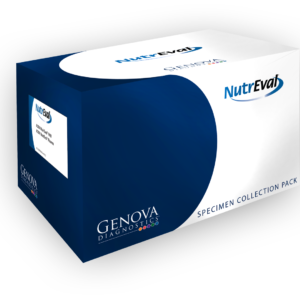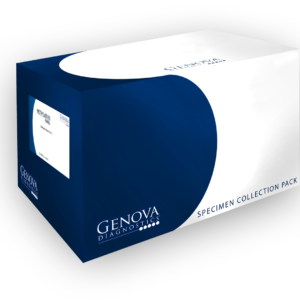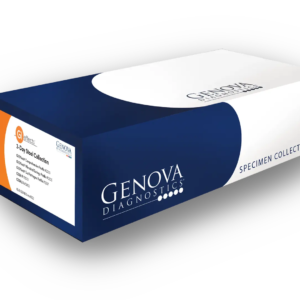
Quick Dispatch, Hassle-Free Returns, Professional Results
Convenient Delivery:
- Direct to Your Home: PW Therapy partners with top laboratories to deliver test kits right to your door after you make a purchase. We handle all outgoing postage costs.
- Delivery Timeline: Expect your kit within five working days, although this may shift due to external circumstances beyond our control.
Simple Test Return Procedure:
- Return Options: Once you’ve completed the test, send it back to the lab using the pre-provided courier slip or choose to use Royal Mail services.
- Cost-Effective Return: Sending your test back to us is economical, with postage to the labs costing only £5-10.
Prompt Results Processing:
- Results in 48 Hours: After PW Therapy receives your test results, we commit to processing and sending them to you within 48 hours.
- Expert Consultations Available: For a detailed understanding of your results and tailored advice on next steps, please book a consultation with our specialist team.
Description
Maximise your nutrition and improve your health
Nutrition is powerful! A few simple tweaks can make a big difference in your body and how you feel. Nutritional testing can help you identify your unique nutritional needs.
Nutrition is important for every body system. Poor nutrition contributes to many chronic diseases. If you struggle with any of the following conditions or are curious about your nutritional status, nutritional testing may be able to help identify the root cause of your ailments:
- Depression
- Heart disease
- Obesity and Type 2 Diabetes
- Fatigue
- Weight issues
- General dietary guidance
- Malnutrition (often observed in the elderly)
- Maldigestion/Malabsorption related to the gut
- Athletic performance
- Physical trauma/healing
Genova’s nutritional testing provides a more complete assessment compared to what standard labs offer. Personalised recommendations for amino acids, fatty acids, vitamins, minerals, digestive support, and other nutrients are provided. Testing can also reveal toxic exposures and measure your body’s ability to neutralise those toxins.
The benefits of nutritional balance include healthy weight, mental wellness, disease prevention, and increased energy – if you are ready to feel your best, talk with your healthcare practitioner today about nutritional testing.
The Metabolomix+ can be collected completely in the comfort of your own home. It requires a urine sample and if your practitioner orders add-on testing, a bloodspot finger stick, and cheek swab. We have many resources to help make your testing experience a success. Review the Test Preparation tab to learn more about the collection process.
Important Prep Before Patient Takes Test
Certain medications, supplements, and/or foods may impact test results. Please note that the reference ranges were established based on patients who were taking no medications or supplements. In some instances it is unknown what potential impact a medication may have on test results.
Genova never recommends that patients discontinue medically necessary medications or supplements in order to complete testing.
There may be times when a patient may stay on a medication or dietary supplement during testing in order to evaluate its effectiveness. The recommendation to discontinue any substance is intended to establish a baseline finding. While there are no rigid rules on time frames for discontinuing supplements to establish a baseline, some clinicians choose to discontinue 4 days prior to testing. If you choose to discontinue a medication, a good rule of thumb is to take the biological half-life of the drug times 5 to allow for ‘clearance’ before testing. With certain medications, the drug itself may have cleared the body, but the effect of the medication may be longer lasting. Below you will find a list detailing the potential interference or influence of certain substances on the biomarkers.
| Dietary Factor | Possible Impact on Results |
| Artificial sweeteners and MSG | Artificial sweeteners and MSG are composed of amino acids which can directly impact measured amino acid levels |
| Eat your usual diet; avoid over-consuming any single food, extreme diets, or engaging in a rigourous activity (i.e. marathon) | Extreme diets and activity may impact certain organic acid biomarkers related to the citric acid cycle, neurotransmitter metabolites, dysbiosis markers, or amino acids |
| Phenol and flavonoid containing compounds in fruits, vegetables, chocolate, and tea can result in elevation of certain bacterial and fungal dysiosis markers on the organic acids profile | |
| Bananas, pineapple, kiwi, plums, avacado, walnuts, and pecans can result in an elevation of the serotonin metabolite 5-HIAA measured on the organic acids profile | |
| Seafood | Seafood containing heavy metals such as mercury and arsenic can result in a transient elevation |
| Six 8-ounce glasses of fluid | Creatinine concentration is influenced by fluid intake |
| Fasting, water allowed only | Reference ranges were set based on an overnight-fasted population. Overnight fasting minimises influence of a single meal and provides a “steady diet” sample |
Medications and supplements may impact results. The discontinuation of any medication is at the discretion of the clinician, only if medically appropriate.
| Medications and Supplements | Possible Impact on Results |
| Valproic acid | Direct assay interferent for organic acid xanthurenic acid |
| Acetaminophen | Direct assay interferent for multiple organic acids |
| Berberine HCl | Direct assay interferent for organic acids IAA and 5-HIAA |
| Antibiotics, antifungals, probiotics, digestive enzymes, acid blocking medications | May indirectly influence urinary organic acid markers of malabsorption/dysbiosis Amino acid levels may be impacted by aminoglycoside antibiotics |
| Amphetamines, centrally acting medications, antidepressants, Anti-Parkinsonian medications | May influence urinary organic acid markers of neurotransmitter metabolism1,2 |
| HMG-CoA-reductase inhibitors (statins) and red yeast rice | May indirectly increase urinary organic acid B-methylglutaric acid levels |
| N-Acetyl Cysteine (NAC) | Direct assay interferent for cholesterol and triglycerides add-on tests; may lead to falsely low results |
| Oral contraceptives, estrogen therapy | May increase the organic acid quinolinic acid excretion both from altered tryptophan metabolism directly, as well as the indirect functional vitamin B6 insufficiency3 |
| Quercetin | May elevate the organic acid homovanillic acid4 |
| Steroids | May lower inflammatory neurotransmitter metabolite quinolinic acid, an organic acid |
| Diuretics | May impact creatinine concentration, thus affecting all urinary biomarker measurements |
| Fibrates | May influence fatty acid levels In some animal studies, fibrates also impact cellular energy metabolites on the organic acids profile |
| Kreb’s cycle and amino chelated supplements (i.e. citrate, malate, succinate, glycinate, threonate, and orotate forms of supplements [magnesium citrate], alpha ketoglutarate, and others) | May result in elevations of corresponding Kreb’s cycle markers and amino acids |
| Provocation/chelating agents (i.e. DMPS, DMSA, EDTA, etc.) | Reference ranges are based on a non-provoked, non-chelated patient population |
| Vitamin C | May increase urinary excretion of organic acid oxalic acid or lead |
Dietary Influences on urinary organic acids:4-16
| Urinary Metabolite | Common Dietary Sources |
| Indoleacetic acid | High tryptophan intake, green/black tea |
| Phenylacetic acid | Wine/grapes |
| Dihydroxyphenylpropionic acid | Whole-grains, chocolate, coffee, green/black tea, olives/olive oil, citrus fruits (animal studies) |
| 3-Hydroxyphenylacetic acid & 4-hydroxyphenlyacetic acid | Wine/grapes, cranberries, green/black tea, berries, orange juice, grape seed extract |
| Benzoic acid/Hippuric acid | Orange juice, elderberry, huckleberry, food preservative, berries, other flavonoids |
| Citramalic acid | Apples, cranberries, sugar beets |
| Tartaric acid | Wine/grapes, chocolate, food additive/preservative |
| Malic acid | Fruits (apples, pears), vegetables, throat lozenges, syrups, beverages with food preservatives and additives |
| Homovanillic acid | Flavanols including tomatoes, onions and tea |
| 5-hydroxyindolacetic acid | Bananas, plantains, kiwi, pineapple, nuts, and tomatoes |
Diabetic Patients
Urine glucose is a direct interferent to the lipid peroxides assay. Patients with uncontrolled diabetes and elevated urine glucose may receive a result of ‘not reportable, NR’ for lipid peroxides. Sodium-Glucose Cotransporter-2 (SGLT2) Inhibitors lower blood sugar by disposing of excess glucose via urine.
Urinary Creatinine Levels and Kidney Function
The urine biomarkers are ratioed to urinary creatinine. The urine biomarkers include organic acids, urine amino acids and urine oxidative stress markers. If urinary creatinine is out of range, it can impact the levels of reported urine analytes which are used for nutrient recommendations. The collection instructions recommend not to drink more than six, 8-ounce glasses of liquid (48 ounces) 24 hours prior to sample collection because it can dilute the urine impacting the reported urine analytes. Below are considerations for altered urinary creatinine:
- Elevated Creatinine: High muscle mass, heavy exercise or increased physical activity, increased protein intake, significant dehydration, and increased renal clearance.
- Low Creatinine: Poor renal clearance or dysfunction, low muscle mass (i.e. physical inactivity or muscle wasting disease), diluted urine (use of diuretics), malnutrition/protein insufficiency, and hypothyroidism.
We do not recommend urine testing in a patient with known kidney dysfunction, defined by abnormal serum testing.
Paediatric Patients
Testing is not available for children under 2 years old and samples will be discarded. Appropriate reference ranges have not been established for this population. We do not recommend squeezing liquid out of a diaper for sample collection, as this can result in altered concentrations of creatinine and biomarkers. A pediatric urine bag that can be taped to the body is available upon request for appropriate sample collection. While this is not a catheter procedure, instructions for catheterised patients can be followed below with regards to collecting and pooling all urine samples from the child’s bedtime to early morning awakening.
Urinary Catheters
It is unknown whether having a catheter placed will affect the results, or whether there will be any interference or decreased viability of the sample owing to this procedure. It is imperative to collect all urine samples from bedtime until early morning awakening. The bladder should be voided before bed. If the patient urinates during the night, the contents of the bag should be emptied into a clean container and refrigerated as soon as possible. This must be done each time urine is collected during the night. This may be inconvenient for the patient but would ensure a more viable sample. Finally, collect the first urine upon waking for the day, and combine that sample with all samples collected during the night. Ensure the combined sample is well mixed before transferring into the labeled tubes.
Pregnant Patients
The reference ranges were not designed for a pregnant population. However, it may be useful to evaluate functional nutritional needs to optimise health during pregnancy, for both the mother and fetus. In pregnancy, the demand for various nutrients increases dramatically. The recommendations offered may reflect that increased nutritional burden. However, because the reference ranges were not established for this patient population, the implementation of nutrient recommendations or botanicals should be in accordance with standard pregnancy recommendations and precautions. Please refer to the link below addressing micronutrient needs during pregnancy and lactation:
References
- Grouzmann E, Lamine F. Determination of catecholamines in plasma and urine. Best Pract Res Clin Endocrinol Meta. 2013;27(5):713-723.
- Alam N, Wasi N, Naeem S, et al. Methylphenidate increases the urinary excretion of vanillylmandelic acid in rats that is attenuated by buspirone co-administration. Pak J Pharm Sci. 2019;32(2 (Supplementary)):895-898.
- Rose D, Toseland P. Urinary excretion of quinolinic acid and other tryptophan metabolites after deoxypyridoxine or oral contraceptive administration. Metabolism. 1973;22(2):165-171.
- Combet E, Lean ME, Boyle JG, Crozier A, Davidson DF. Dietary flavonols contribute to false-positive elevation of homovanillic acid, a marker of catecholamine-secreting tumors. Int J Clin Chem. 2011;412(1-2):165-169.
- Zamora-Ros R, Achaintre D, Rothwell JA, et al. Urinary excretions of 34 dietary polyphenols and their associations with lifestyle factors in the EPIC cohort study. Sci Rep. 2016;6:26905.
- Ward NC, Croft KD, Puddey IB, Hodgson JM. Supplementation with grape seed polyphenols results in increased urinary excretion of 3-hydroxyphenylpropionic Acid, an important metabolite of proanthocyanidins in humans. J Agric Food Chem. 2004;52(17):5545-5549.
- Sugimoto N, Forsline P, Beaudry R. Volatile Profiles of Members of the USDA Geneva Malus Core Collection: Utility in Evaluation of a Hypothesized Biosynthetic Pathway for Esters Derived from 2-Methylbutanoate and 2-Methylbutan-1-ol. J Agricul Food Chem. 2015;63(7):2106-2116.
- Hulme A. The isolation of L-citramalic acid from the peel of the apple fruit. Biochim Biophys Acta. 1954;14:36-43.
- Liu H, Garrett TJ, Su Z, Khoo C, Gu L. UHPLC-Q-Orbitrap-HRMS-based global metabolomics reveal metabolome modifications in plasma of young women after cranberry juice consumption. The J Nutr Biochem. 2017;45:67-76.
- Khorassani R, Hettwer U, Ratzinger A, Steingrobe B, Karlovsky P, Claassen N. Citramalic acid and salicylic acid in sugar beet root exudates solubilize soil phosphorus. BMC plant biology. 2011;11(1):121.
- van der Hooft JJ, de Vos RC, Mihaleva V, et al. Structural elucidation and quantification of phenolic conjugates present in human urine after tea intake. Analyt Chem. 2012;84(16):7263-7271.
- Jacobs DM, Fuhrmann JC, van Dorsten FA, et al. Impact of short-term intake of red wine and grape polyphenol extract on the human metabolome. J Agricul Food Chem. 2012;60(12):3078-3085.
- Rios LY, Gonthier M-P, Rémésy C, et al. Chocolate intake increases urinary excretion of polyphenol-derived phenolic acids in healthy human subjects. Am J Clin Nutr. 2003;77(4):912-918.
- Henning SM, Wang P, Abgaryan N, et al. Phenolic acid concentrations in plasma and urine from men consuming green or black tea and potential chemopreventive properties for colon cancer. Mol Nutr Food Res. 2013;57(3):483-493.
- Feliciano RP, Boeres A, Massacessi L, et al. Identification and quantification of novel cranberry-derived plasma and urinary (poly)phenols. Arch Biochem Biophys. 2016;599:31-41.
- Corcuff J-B, Chardon L, El Hajji Ridah I, Brossaud J. Urinary sampling for 5HIAA and metanephrines determination: revisiting the recommendations. Endocr Connect. 2017;6(6):R87-R98.




